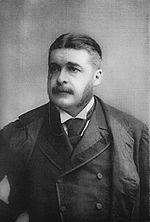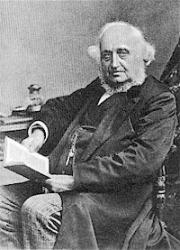Planning worship?
Check out our sister site, ZeteoSearch.org,
for 20+ additional resources related to your search.
- |
User Links
Search Results
There is a calm for those who weep
Author: Montgomery Appears in 134 hymnals Topics: Chants Used With Tune: TROYTE'S CHANT
There is a calm for those who weep
TROYTE'S CHANT
Appears in 139 hymnals Composer and/or Arranger: A. H. D. Troyte Incipit: 33454 32333 21217 Used With Text: There is a calm for those who weep
TROYTE'S CHANT
STAR OF DAY
Meter: 8.8.8.8 Appears in 2 hymnals Composer and/or Arranger: Unknown Tune Sources: Harmonia Sacra Tune Key: E Flat Major Incipit: 13531 223 Used With Text: There Is a Calm for Those Who Weep
STAR OF DAY
A Calm for Those Who Weep
Author: Rev. James Montgomery Hymnal: The Harp of Glory #244 (1911) First Line: There is a calm for those who weep Languages: English Tune Title: [There is a calm for those who weep]
A Calm for Those Who Weep
There is a Clam for those who Weep
Hymnal: Palmer's Book of Gems #78 (1887) First Line: There is a calm for those who weep Languages: English Tune Title: [There is a calm for those who weep]
There is a Clam for those who Weep
There Is a Calm for Those Who Weep
Author: James Montgomery Hymnal: The Cyber Hymnal #6747 Meter: 8.8.8.8 Lyrics: 1. There is a calm for those who weep,
A rest for weary pilgrims found;
They safely lie and sweetly sleep,
Low in the ground, low in the ground.
2. The storms that sweep the wintry sky
No more disturb their deep repose,
Than summer evening’s latest sigh
That shuts the rose, that shuts the rose.
3. Thy soul renewed by grace divine,
In God’s own image, freed from clay,
In Heav’n’s eternal sphere shall shine,
A star of day, a star of day.
4. The sun is but a spark of fire,
A transient meteor in the sky,
The soul, immortal as its Sire,
Shall never die, shall never die! Languages: English Tune Title: STAR OF DAY
There Is a Calm for Those Who Weep
Arthur Sullivan

1842 - 1900 Person Name: Sir Arthur S. Sullivan, Mus. D. Composer of "[There is a calm for those who weep]" in The Church and Home Hymnal Arthur Seymour Sullivan (b Lambeth, London. England. 1842; d. Westminster, London, 1900) was born of an Italian mother and an Irish father who was an army bandmaster and a professor of music. Sullivan entered the Chapel Royal as a chorister in 1854. He was elected as the first Mendelssohn scholar in 1856, when he began his studies at the Royal Academy of Music in London. He also studied at the Leipzig Conservatory (1858-1861) and in 1866 was appointed professor of composition at the Royal Academy of Music. Early in his career Sullivan composed oratorios and music for some Shakespeare plays. However, he is best known for writing the music for lyrics by William S. Gilbert, which produced popular operettas such as H.M.S. Pinafore (1878), The Pirates of Penzance (1879), The Mikado (1884), and Yeomen of the Guard (1888). These operettas satirized the court and everyday life in Victorian times. Although he composed some anthems, in the area of church music Sullivan is best remembered for his hymn tunes, written between 1867 and 1874 and published in The Hymnary (1872) and Church Hymns (1874), both of which he edited. He contributed hymns to A Hymnal Chiefly from The Book of Praise (1867) and to the Presbyterian collection Psalms and Hymns for Divine Worship (1867). A complete collection of his hymns and arrangements was published posthumously as Hymn Tunes by Arthur Sullivan (1902). Sullivan steadfastly refused to grant permission to those who wished to make hymn tunes from the popular melodies in his operettas.
Bert Polman
Arthur Sullivan
William B. Bradbury

1816 - 1868 Person Name: Wm. B. Bradbury Composer of "ORIEL" in The Standard Church Hymnal William Batchelder Bradbury USA 1816-1868. Born at York, ME, he was raised on his father's farm, with rainy days spent in a shoe-shop, the custom in those days. He loved music and spent spare hours practicing any music he could find. In 1830 the family moved to Boston, where he first saw and heard an organ and piano, and other instruments. He became an organist at 15. He attended Dr. Lowell Mason's singing classes, and later sang in the Bowdoin Street church choir. Dr. Mason became a good friend. He made $100/yr playing the organ, and was still in Dr. Mason's choir. Dr. Mason gave him a chance to teach singing in Machias, ME, which he accepted. He returned to Boston the following year to marry Adra Esther Fessenden in 1838, then relocated to Saint John, New Brunswick. Where his efforts were not much appreciated, so he returned to Boston. He was offered charge of music and organ at the First Baptist Church of Brooklyn. That led to similar work at the Baptist Tabernacle, New York City, where he also started a singing class. That started singing schools in various parts of the city, and eventually resulted in music festivals, held at the Broadway Tabernacle, a prominent city event. He conducted a 1000 children choir there, which resulted in music being taught as regular study in public schools of the city. He began writing music and publishing it. In 1847 he went with his wife to Europe to study with some of the music masters in London and also Germany. He attended Mendelssohn funeral while there. He went to Switzerland before returning to the states, and upon returning, commenced teaching, conducting conventions, composing, and editing music books. In 1851, with his brother, Edward, he began manufacturring Bradbury pianos, which became popular. Also, he had a small office in one of his warehouses in New York and often went there to spend time in private devotions. As a professor, he edited 59 books of sacred and secular music, much of which he wrote. He attended the Presbyterian church in Bloomfield, NJ, for many years later in life. He contracted tuberculosis the last two years of his life.
John Perry
William B. Bradbury
George J. Elvey

1816 - 1893 Composer of "CALM" in Hymn and Tune Book of the Methodist Episcopal Church, South (Round Note Ed.) George Job Elvey (b. Canterbury, England, 1816; d. Windlesham, Surrey, England, 1893) As a young boy, Elvey was a chorister in Canterbury Cathedral. Living and studying with his brother Stephen, he was educated at Oxford and at the Royal Academy of Music. At age nineteen Elvey became organist and master of the boys' choir at St. George Chapel, Windsor, where he remained until his retirement in 1882. He was frequently called upon to provide music for royal ceremonies such as Princess Louise's wedding in 1871 (after which he was knighted). Elvey also composed hymn tunes, anthems, oratorios, and service music.
Bert Polman
George J. Elvey


 My Starred Hymns
My Starred Hymns

